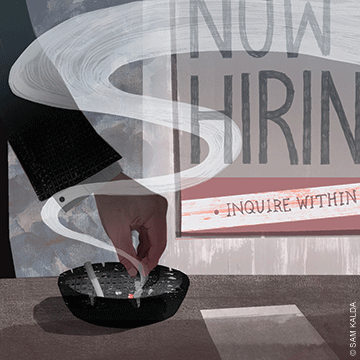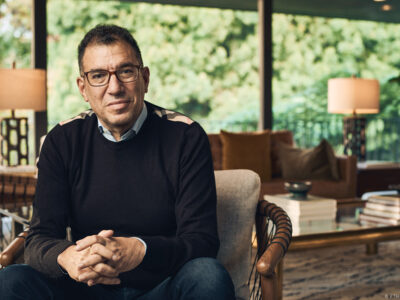
Starting July 1, the University of Pennsylvania Health System (UPHS) will no longer hire tobacco users. The new policy will affect all future UPHS employees, including physicians (apart from those who work in the system’s New Jersey-based clinical practices, where state law restricts employers from limiting employment opportunities based on tobacco use). While current employees will be “grandfathered” and not subject to firing, those who use tobacco will have to pay a higher premium for their healthcare benefits “if they are not actively enrolled in a smoking-cessation program or nicotine-replacement therapy.” Because of UPHS’s lengthy recruitment cycle, medical residents and fellows will have an additional one-year grace period.
Details of the new policy are available at tinyurl.com/b5ocuw9.
The logic is not hard to understand. The Health System employs nearly 18,000 people, and the healthcare costs for those who smoke are an average of $3,391 a year higher than for their nonsmoking counterparts, the UPHS website notes. Throughout the United States, smoking and secondhand smoke “contribute to 443,000 premature deaths a year, and cost $193 billion in healthcare costs and lost productivity.” Furthermore, smoke breaks during work “may be disruptive and subject patients/colleagues to the unpleasant smell of smoke on employees’ scrubs and clothing.” And since the very mission of healthcare organizations is “healing the sick and cultivating healthier communities,” it’s not a huge leap for UPHS to be among the first employers to “move toward a tobacco-free future—ending a habit that leads to disease, disability, and premature death.”
The new policy has had some public critics, both inside and outside the Health System. But the decision to implement the policy was not made lightly.
“Our discussions around this decision started two-and-a-half years ago,” notes Judy Schueler, UPHS’s vice president for organizational development and its chief human-resources officer. “It’s been a very, very long road. We actually started out, like many employers, looking at the escalating cost of healthcare benefits, and asking what could the employer do to incentivize more healthy choices.”
After examining how other organizations have pursued that goal, including the Cleveland Clinic (which implemented a similar program in 2007), UPHS officials determined to go beyond financial incentives.
The Health System already offers numerous smoking-cessation programs and financial incentives to quit, Schueler points out. “Our thinking is that for 50 years, we haven’t been able to get to the point where we’re tobacco-free as a society,” even though “we’ve known that tobacco is the leading preventable cause of death and disease in the United States,” with all the attendant costs. “So if you ask me, ‘What do you hope is the endgame on this?’ I hope we save an employee’s life.”
Schueler allows that there is no longitudinal evidence that such policies really do lead to significant savings or healthier employees, since the policies are recent and few. “We’re creating the evidence,” she says.
She also averred that the policy will not affect the rate of UPHS employment in West Philadelphia, a sensitive subject.
“We monitor our employment rates from West Philadelphia,” she says, “and the commitment we’ve made is that we will make sure that the participation rate does not fall. And we believe [that a lowered rate of local employment] will not be the case. The vast majority of residents don’t smoke.”
A robust discussion among Penn faculty played out in the pages of The New England Journal of Medicine (NEJM) and other media outlets.
Criticizing the policy were Harald Schmidt (lecturer in the Department of Medical Ethics and Health Policy, and a research associate at the Center for Health Incentives and Behavioral Economics at the Leonard Davis Institute) and Ezekiel Emanuel (vice provost for global initiatives and the Diane v.S. and Robert M. Levy University Professor in the Department of Medical Ethics and Health). They were joined by Kristin Voigt, an assistant professor in McGill University’s Institute for Health and Social Policy.
“It seems paradoxical for healthcare organizations that exist to care for the sick to refuse to employ smokers,” wrote the three in the NEJM’s March 27 issue. “Many patients are treated for illnesses to which their behavior has contributed, including chronic obstructive pulmonary disease, heart failure, diabetes, and infections spread through unprotected sex or other voluntary activities. It is callous—and contradictory—for healthcare institutions devoted to caring for patients regardless of the causes of their illnesses to refuse to employ smokers. Just as they should treat people regardless of their degree of responsibility for their own ill health, they should not discriminate against qualified job candidates on the basis of health-related behavior.”
The three dismissed as “too simplistic” the broader claim that it’s fair to stop hiring smokers because they contribute to rising healthcare costs.
That claim “ignores the fact that smoking is addictive and therefore not completely voluntary,” they note, especially since 88 percent of adult daily smokers start smoking by the time they’re 18. Given that “as many as 69 percent of smokers want to quit” but only “3 to 5 percent of unaided cessation attempts succeed,” they added, “it is therefore wrong to treat smoking as something fully under an individual’s control.”
There was some common ground between the policy’s critics and supporters. Both sides agree that “the burden of mortality and disease attributable to smoking isn’t acceptable and something should be done about it,” Schmidt noted during a debate on WHYY’s Radio Times last month. Where they differ is on the means used to achieve that end.
“Means matter morally here,” said Schmidt. “There are different ways in which we can get to the aim of not getting people to smoke. And it seems premature to me to say we’ve already exhausted all options. There are a lot of interventions that show how employers can productively and, with support, help people quit smoking. In my view we should exhaust those options first.”
He remarked that the policy’s stipulation that smokers “may also be charged up to $2,500 more” for health insurance next year is one such option.
“Personally, I think that’s a bad idea,” Schmidt added quickly, “but I am surprised that advocates of not hiring smokers wouldn’t say, ‘Let’s first see how that measure—which will be available from next year on a much larger scale—fares, and then we will think about not employing smokers. But let’s take it one step at a time. Let’s not go with the most aggressive approach up front.”
But in the view of David Asch GM’87 WG’89, professor of medicine and executive director of Penn Medicine’s Center for Innovation, “it’s time to escalate.”
“We’ve been spending 50 years on this since the Surgeon General’s report,” said Asch, who has been a leading voice in support of the policy, in a recent interview with the Gazette. “It’s not like we’re moving really fast here.”
Asch co-wrote a counterpoint piece for the NEJM with Ralph Muller (CEO of the UPHS) and Kevin Volpp (professor of healthcare management and director of the Center for Health Incentives and Behavioral Economics).
While the three recognized that such policies “risk creating or perpetuating injustices” among groups of lower socioeconomic status, “these policies may also save lives, directly and through their potential effects on social norms, and these same disadvantaged populations are at greatest risk for smoking-related harms and ensuing disparities in health.”
Asch and his colleagues noted that the “gentler interventions … haven’t resulted in adequate smoking-cessation rates.” After 18 months in a randomized trial, for example, even when employers provided financial incentives as well as counseling, “91 percent of employees who wanted to quit could not.”
Asch and Schueler are keenly aware of the ethical dilemmas involved.
“We can have debates about the concept, the ethics, whether we’re moving too fast,” says Asch. “But in the end, you have to have the policy implemented. There are a bunch of implementation questions—what if you get busted for lying? What if somebody falls off the wagon? What are the issues about verification? When you have a high-stakes policy like this, the devil is in the details.”
For example, the policy states that those who apply for a job “will be asked to attest that they are non-tobacco users on their employment application. Falsification of information on the employment application is grounds for discipline up to and including termination.”
But that hard line is somewhat less harsh than it may seem. Unlike the Cleveland Clinic, for example, which uses biochemical tests to detect the presence of tobacco in its employees, “We’re not testing for cotinine,” says Schueler, referring to a metabolite of nicotine. “And the reason we’re not is that 85 percent of our population doesn’t use tobacco products. So to test everyone seems like a waste. We rely on integrity. We say, ‘Do you attest to whether you use tobacco or not?’ If someone attests to not using it and two months later they’re sitting on the front steps of HUP smoking, we’re going to say, ‘There’s probably reasons why you started to use tobacco again, so here’s some programs we have to help you. If you participate in those programs, you’ll get and earn premium discounts; if you don’t, you’ll pay a higher rate.’ So we’re going to treat our workforce like we do now, with the respect that they’re due.”
Apart from the NEJM articles,the debate on WHYY, and a few opinion pieces, the announcement of the policy did not spark a huge controversy. Schueler and Asch attribute that partly to the fact that the Cleveland Clinic had gone down that road first, and partly to the amount of discussion that went on while they were preparing the policy.
“We had focus groups, work groups, and town-hall meetings across Penn Medicine,” says Schueler. At the first, two-and-a-half years ago, “We said, ‘What if we stop hiring tobacco users?’ There was kind of a gasp in the audience. Now you can go back to that same town-hall meeting and they’re like, ‘OK, what do you want me to do?’ I think there’s an acceptance that internally we have good support systems in place to help people stop using tobacco if they so choose. If they don’t, they’re still employees. They’re not adversely impacted. We’re trying to impact future generations of healthcare employees in this organization.”
As the discussion continued, UPHS officials brought in groups of employees to gauge their reactions.
“What we heard from employees was, ‘You know, I get tired of covering for employees who leave the building four or five times a day,’” says Schueler. “And patients said, ‘The stink of smoke on the scrubs makes me nauseous.’ So that provided a new dimension that we really hadn’t talked about before.”
During the course of the discussion, “it was very clear the pathway we were going down,” she adds. “And we really ramped up more services for individuals who use tobacco products.” As a result, “We had 400 employees in the last two years sign up for our free smoking-cessation program.
“We knew it would be a bold step,” she adds. “We vetted it with many different populations. Eleven percent of our own employees declare themselves smokers. I know some of them. They’re great employees, good employees. And what we’re doing now is we’re continuing to incentivize them.”
Both Schueler and Asch emphasize the importance of robust debate on this issue. When he first heard about the critical piece in the NEJM, some people in the Health System “were sort of upset about it,” Asch recalls. “They were saying, ‘We’re getting killed by friendly fire! Here’s our own faculty from our own university who are critical of our policy!’ And my reaction was, ‘This is terrific! This is totally what we’re about. We’re an academic health system—we are all about bringing this out in public, so let’s have a public discussion about this.’”
Furthermore, “Because we’re actually a real hospital and health system, let’s not just have an academic debate; let’s do something. We’re taking a side as an institution. So in my mind, we’re in the best of both worlds. We’re simultaneously having a thoughtful debate, and we’re taking a position because we’re also a service organization.”
At the end of the day, it wouldn’t be surprising if other healthcare organizations soon adopted similar policies, Asch adds. “I’m fairly certain that a lot of other places were just waiting for HUP to make a move in a way that will provide them with air cover.” —S.H.




